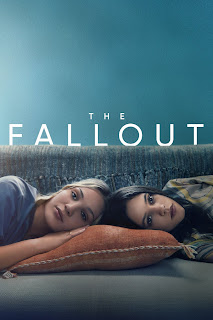Genre Research: Drama
There are many things that make a genre clear to what it is. For example, the genre drama has usually always has these factors to it.
Camera angles:
Close up: Drama films often have close ups to show the expressions of the actors. The close up makes it clear on how the actor is feeling through their expressions. It can make the scene more dramatic and express the intensity of the scene.
Long shot: Long shots can set the scene for the viewer. They can show the background and give insight to what might happen in the scene, but they also keep some of the focus on the main character.
Over the shoulder: This type of camera angle can show the POV of the character which could be an object or another character. These types of shots add drama.
Costumes:
Costumes depend on the setting and time period of the movie. Modern day movies set in common society have typical clothes we would see day to day. For example, business wear, dresses, jeans and t-shirts.
Lighting:
The lighting in drama movies is often bright, highlighting the action going on in scene. The lighting may change based on the scene. For example during a more romantic scene, the lighting may dim.
Makeup:
The makeup featured in drama movies is often light makeup just to make the actors and actresses more appealing. Dramatic makeup looks are also common, with fun colors around the eyes or on lips. Makeup can also be used to create wounds, if that is part of the movie.
Props:
Vehicles, phones, books, and other every day objects are found in dramas. There are a wide range of different drama movies, so props differ movie to movie.
Settings:
Suburbs, big cities, small towns are the most common. Drama movies can also be filmed in strange places such as on a ship or a secluded island.
Editing:
Flashbacks often add drama to a scene. They can give information about a characters past, which can create elements of drama in the movie.
Smash cuts are another common editing technique found in drama movies. It is a fast cut between two scenes which makes an impact on the audience and creates drama.
Sound:
Diegetic sound: Yelling or arguing, crying, stomping or normal conversations are all found in drama movies.
Non diegetic sound: Suspenseful music, sad music, narrators, and upbeat music are all found in drama movies.
Unappealing points of drama:
Can be stereotypical. A lot of dramas have a damsel in distress, and a male comes to save her. Black character are often shown for comedic relief and they don't have a lot of depth to them.
Drama actors need to show a lot of emotion and be very good actors. We may not have access of actors that can play the part in a drama film very well.
Some topics discussed in drama films such as alcohol or drug use can be offensive or triggering to viewers. We are also underage students, and would not be able to use these things.
Appealing points of drama:
Drama movies can be filmed in simple locations such as a town. We have access to that.
Drama movies can be about a range of topics, so there is a range of storylines that we could use. Also we could create a more realistic storyline that could be easier to film.
Life of Pi, Breathe, The Fallout, and Just Mercy are all examples of drama movies.




Comments
Post a Comment